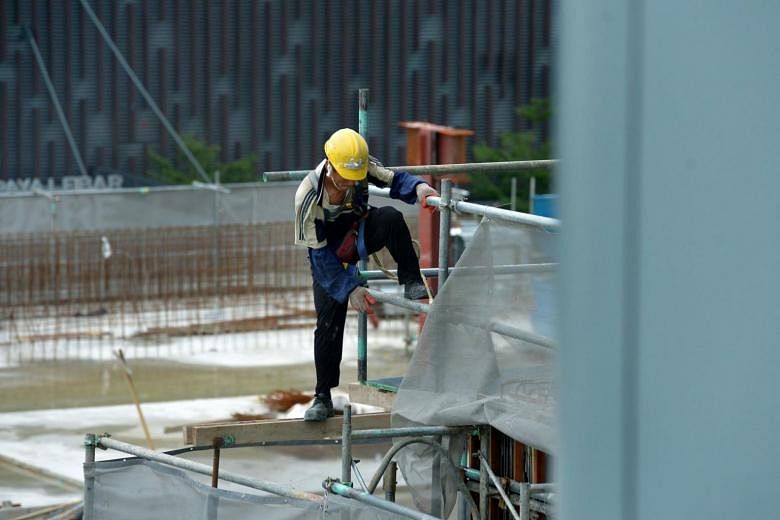Fewer workers lost their lives in accidents last year, as workplace deaths dipped to a 13-year lowamid an ambitious push to halve the current fatality rate.
According to fresh figures from the Ministry of Manpower (MOM), 41 workers died on the job in accidents, including falling from height and being hit by vehicles.
It is the first time the figure has gone below 50 since 2004. From then until 2016, each year saw between 55 and 83 workplace deaths.
Analysts attributed the improvement to a concerted effort by key stakeholders, such as developers, contractors and workers, to transform mindsets about safety, as well as legislative changes and a step-up in enforcement.
But they cautioned against reading too much into one year's data, adding that Singapore will need to double up efforts to have fewer than one workplace fatality per 100,000 workers before 2028 - a target set by Prime Minister Lee Hsien Loong last year and maintained by countries such as the Netherlands, Britain and Sweden.
It is half the current rate of 1.9 recorded in Singapore in 2016. The figure for last year is not available.
Commenting on the latest figure, Singapore Institution of Safety Officers honorary president Seet Choh San and Singapore Contractors Association president Kenneth Loo said the focus on supporting companies in workplace safety and health matters has helped to shift attitudes.

Mr Seet cited the MOM's SnapSafe mobile application, which allows company staff to flag unsafe practices internally. This is not used for enforcement purposes by MOM, and gives firms a chance to discover and solve problems that they may not be aware of, he said.
Mr Loo said "a cooperative and encouraging attitude also helps all parties take ownership of safety" and could lead to behavioural change in the long term. The wider change in attitudes has helped developers recognise their role in promoting safety, he added, and more now take safety records into account when awarding projects.
The labour movement, meanwhile, has also worked closer with the manufacturing, construction and transportation industries, the top three contributors of workplace fatalities, said Mr Melvin Yong, secretary of the NTUC Workplace Safety and Health Committee.
At the same time, laws have been tightened, with amendments over the past two years to the Workplace Safety and Health (WSH) Act.
For instance, fines for recalcitrant firms which commit multiple serious safety breaches have more than doubled.
Stiffer penalties help to send a message to all stakeholders, including the "big boys" who have the resources and should already be paying attention to workplace safety, said Mr Jason Oh, adviser of the health and safety engineering technical committee of The Institution of Engineers, Singapore.
He noted that SMRT and Jurong Shipyard, a unit of Sembcorp Marine, were hit with record fines of $400,000 each last year for breaching the WSH Act.
A spokesman for non-governmental organisation Transient Workers Count Too said preventing fatalities is only one aspect of safety, and injuries resulting in permanent disability also have dire consequences for workers and their families. The spokesman added it is too early to tell if the fewer deaths last year are part of a downward trend.
Government Parliamentary Committee for Manpower chairman Patrick Tay said the contraction of the offshore and marine sectors and less construction activity last year may have contributed to the fall in accidents. He urged tripartite partners to work harder to "entrench the right workplace safety and health mindset".
SEE TOP OF THE NEWS


